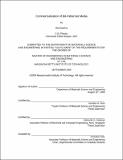| dc.contributor.advisor | Caroline A. Ross and Adekunle O. Adeyeye. | en_US |
| dc.contributor.author | Esterina, Ria | en_US |
| dc.contributor.other | Massachusetts Institute of Technology. Dept. of Materials Science and Engineering. | en_US |
| dc.date.accessioned | 2010-04-26T19:17:47Z | |
| dc.date.available | 2010-04-26T19:17:47Z | |
| dc.date.copyright | 2009 | en_US |
| dc.date.issued | 2009 | en_US |
| dc.identifier.uri | http://hdl.handle.net/1721.1/54199 | |
| dc.description | Thesis (M. Eng.)--Massachusetts Institute of Technology, Dept. of Materials Science and Engineering, 2009. | en_US |
| dc.description | This electronic version was submitted by the student author. The certified thesis is available in the Institute Archives and Special Collections. | en_US |
| dc.description | Cataloged from student submitted PDF version of thesis. | en_US |
| dc.description | Includes bibliographical references (p. 75-79). | en_US |
| dc.description.abstract | Realm of data storage density has expanded from gigabyte- to terabyte-domain. In such a high areal density, bit-patterned media is a promising candidate to overcome the superparamagnetic limit faced by the conventional continuous media. However, the patterned media concept has not been realized in mass production due to several reasons. Beside the stringent requirement of high-resolution lithography, high production cost is inevitably the major challenging problem. If a low-cost mass fabrication scheme is available, bit-patterned media will be an innovative way in hard disk technology to achieve a storage density beyond 1 Tb/in². The objective of this thesis is to review the patterned media technology and discuss its challenges and commercialization viability. A possible mass-production scheme is discussed. Electron beam lithography and self assembly process of block copolymer are used to fabricate the master template. To ensure high throughput, template replication as well as disk fabrication are carried out by UV-nanoimprint lithography (UV-NIL). Considering the large opportunity of patterned media to enter the market, a business plan was constructed. Enormous profit was proved to be possible when the barrier of technology, intellectual property, and funding can be surpassed. Therefore, patterned media shows to be superior in terms of performance and cost compared to the conventional media. | en_US |
| dc.description.statementofresponsibility | by Ria Esterina. | en_US |
| dc.format.extent | 88 p. | en_US |
| dc.language.iso | eng | en_US |
| dc.publisher | Massachusetts Institute of Technology | en_US |
| dc.rights | M.I.T. theses are protected by
copyright. They may be viewed from this source for any purpose, but
reproduction or distribution in any format is prohibited without written
permission. See provided URL for inquiries about permission. | en_US |
| dc.rights.uri | http://dspace.mit.edu/handle/1721.1/7582 | en_US |
| dc.subject | Materials Science and Engineering. | en_US |
| dc.title | Commercialization of bit-patterned media | en_US |
| dc.type | Thesis | en_US |
| dc.description.degree | M.Eng. | en_US |
| dc.contributor.department | Massachusetts Institute of Technology. Department of Materials Science and Engineering | |
| dc.identifier.oclc | 566109970 | en_US |
